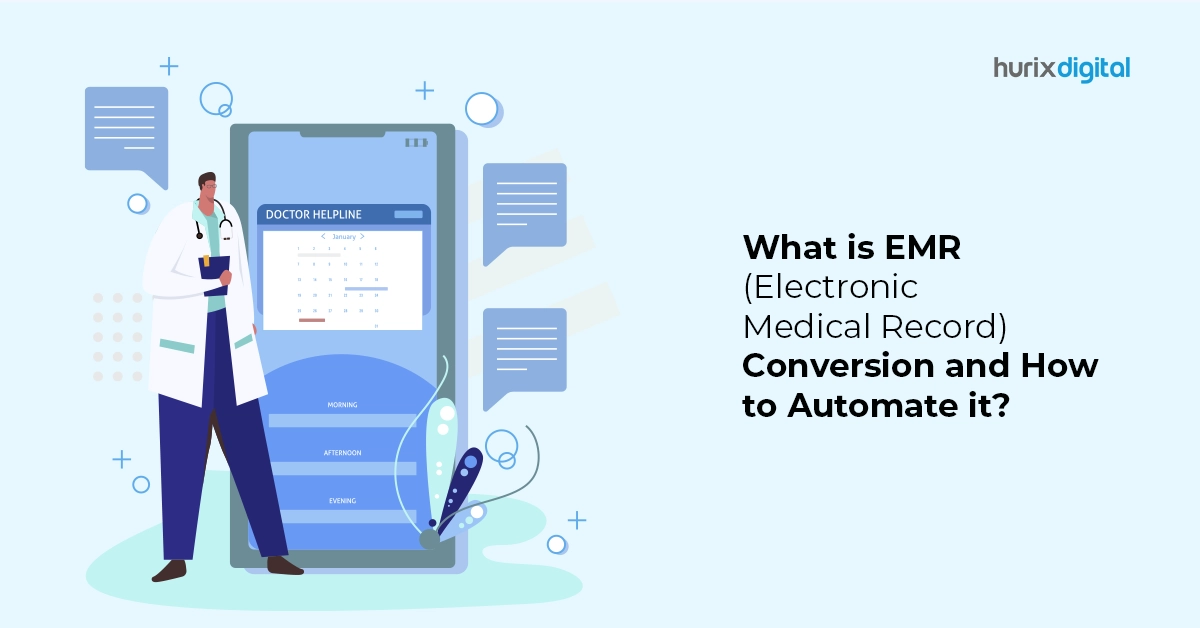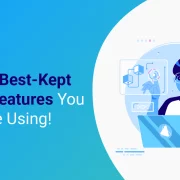
What is EMR (Electronic Medical Record) Conversion and How to Automate it?
Summary
This article explains EMR conversion and how to automate the process. Learn about the benefits and steps for converting electronic medical records efficiently.
In today’s data-driven healthcare landscape, transitioning to an electronic medical record (EMR) system is no longer an option, but a necessity. EMRs offer numerous advantages, from improved patient care and streamlined workflows to enhanced data security and regulatory compliance. Over the past decade, 96% of hospitals in the US have adopted a basic EMR system.
However, navigating the conversion process can be daunting, riddled with complexities and potential disruptions. Here is a comprehensive guide, that delves into the intricacies of EMR conversion and explores the power of automation for a smoother, more efficient transition.
Table of Contents:
- Understanding Fundamentals: What is EMR in Medical Terms?
- Embracing Automation: Streamlining Your EMR Conversion
- Best Practices for a Successful EMR Conversion Journey
- A Recap
- Stepping into the Future: The Value of a Modernized EMR System
- Wrapping Up
Understanding the Fundamentals: What is EMR in Medical Terms?
An EMR is often used interchangeably with the term electronic health record (EHR). However, there’s a significant difference between EMR vs EHR. An EHR is a record that compiles a patient’s health data and is accessible to practitioners in multiple healthcare organizations. On the other hand, an EMR consolidates the medical data – diagnoses, medications, allergies, treatment plans, imaging results, and more – of a patient within one practice into a single platform.
A shift from paper-based charts to digital records offers several benefits:
- Improved Patient Care: EMRs facilitate better communication between healthcare providers, leading to more accurate diagnoses, more coordinated care plans, and reduced medication errors.
- Enhanced Efficiency: Electronic records save time and effort, helping healthcare professionals to spend more time with patients and less time searching for charts.
- Increased Data Security: EMRs offer better data protection compared to paper charts, reducing the risk of loss or unauthorized access.
- Streamlined Billing and Claims Processing: EMRs integrate seamlessly with billing systems, simplifying the claims process and ensuring accurate reimbursement.
However, switching to an EMR system demands a meticulous conversion process involving data migration, system training, and workflow adjustments.
Also Read: Healthcare Access for All: Navigating USA’s Digital Accessibility Standards
Embracing Automation: Streamlining Your EMR Conversion
Manually transferring mountains of paper records into a digital system? Not anymore. Let automation handle the heavy lifting, freeing you to focus on what matters most – your patients.
Manual data migration, the heart of EMR conversion, can be time-consuming and error-prone. Thankfully, automation technology offers a solution, streamlining the process and minimizing disruptions. Here are some key areas where automation shines:
1. Data Extraction and Cleansing
Automated tools can efficiently extract data from paper charts, ensuring accuracy and minimizing typos or inconsistencies. Automate the extraction of patient data from paper charts, ensuring accuracy and minimizing typos or inconsistencies.
2. Coding and Mapping
Automation can assist with coding diagnoses and procedures and mapping data to the new EMR system’s format. Automated tools can assist with coding diagnoses and procedures and mapping data to the new EMR system’s format.
3. Document Scanning and Indexing
Automating document scanning and indexing saves time and improves record organization within the new system. Practitioners can automate document scanning and indexing to save time and improve record organization within the new system.
4. User Training and Adoption
Interactive training modules and guided workflows can accelerate user adoption and reduce resistance to the new system. Implement interactive training modules and guided workflows to accelerate user adoption and reduce resistance to the new EMR system.
Best Practices for a Successful EMR Conversion Journey
An EMR conversion hinges on meticulous planning and preparation. Conduct thorough checks before and after conversion to ensure accuracy and completeness. A successful journey requires both technology and a commitment to best practices.
Here are some best practices to ensure a smooth transition:
- Conduct a Thorough Needs Assessment: Analyze your current workflows and data, identifying challenges and desired outcomes.
- Choose the Right EMR System: Consider factors like functionality, compatibility, budget, and vendor support.
- Assemble a Dedicated Team: Involve stakeholders from various departments to ensure buy-in and smooth implementation.
- Develop a Comprehensive Conversion Plan: Include timelines, data migration strategies, and training schedules.
- Communicate Effectively: Keep all stakeholders informed throughout the process, addressing concerns and ensuring transparency.
- Test and Refine: Conduct thorough testing before going live, identifying and resolving any issues.
Automation is an invaluable tool, but human expertise remains crucial. Ensure your team receives proper training and leverages their knowledge to navigate challenges and optimize the system.
Also Read: The Role of Virtual Simulations in Healthcare Education
A Recap
- Partner with reputable vendors offering reliable automation tools and experienced conversion services.
- Data security and compliance are paramount; ensure chosen tools and processes adhere to strict regulations.
- Guide your team through the transition with a comprehensive change management plan, fostering user adoption and minimizing disruptions.
- Finally, prioritize data quality.
Stepping into the Future: The Value of a Modernized EMR System
EMR conversion paves the way for a future of improved patient care, enhanced efficiency, and data-driven insights. By embracing automation and following best practices, you can navigate this transition seamlessly and unlock the full potential of your EMR system.
Beyond streamlining workflows, a modern EMR system unlocks a treasure trove of benefits.
- Patient care with readily accessible medical histories enables informed decisions and personalized treatment plans.
- Digital records eliminate manual data entry, saving time for both you and your patients.
- Streamlined communication becomes a reality as secure information sharing fosters better collaboration among providers.
- Efficient data management translates to lower administrative overhead and improved claims processing.
As regulations evolve, compliance becomes effortless with your digital records at your fingertips. Embrace the future of healthcare with a modernized EMR system, and step into a world of optimized care, efficiency, and progress.
With proper planning and the right tools, converting to an EMR can be a transformative journey, propelling your practice into the era of modern healthcare.
Wrapping Up
EMR conversion is a critical step toward optimizing patient care, enhancing operational efficiency, and achieving regulatory compliance. By leveraging automation tools and adopting best practices, healthcare providers can navigate this transition smoothly and reap the numerous benefits of digital health records.
Successful conversion is not just about technology; it requires careful planning, collaboration, and a commitment to continuous improvement. By embracing this transformation, healthcare providers can contribute to a more efficient, patient-centered, and future-proof healthcare system.
Partner with Hurix Digital, your trusted guide to a successful EMR conversion. Our team of experienced professionals leverages cutting-edge automation tools and proven best practices to ensure a smooth transition. Contact us today for a free consultation and discover how we can help you step into the future of healthcare.

Vice President – Digital Content Transformation. He is PMP, CSM, and CPACC certified and has 20+ years of experience in Project Management, Delivery Management, and managing the Offshore Development Centre (ODC).




